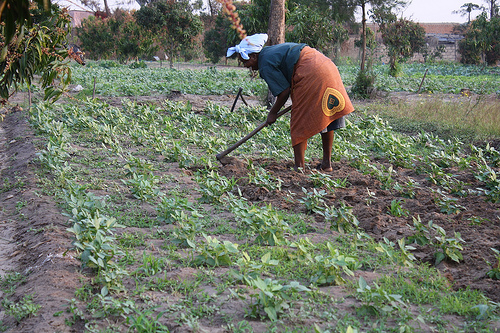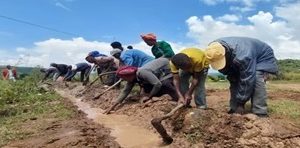
BY GIRMACHEW GASHAW
Sesame, the most ancient oil crop adapted to tropics and sub-tropics around the world, is one of the major commercial grain crops agricultural products of Ethiopia. Among the different oil crops, sesame is the second most important agricultural commodity next to coffee in foreign exchange earning to more than 449 USD million.
Sesame grows in Tigray, Amhara, Gambella, Benshangul Gumuz, Somalia, SNNP and Oromia regions in Ethiopia. However, productivity of sesame is very low due to several reasons. Traditional production technology, weeds, insect pests and diseases, climate change impacts, domestic and global market fluctuations and low research and expert knowledge and skill, are among the major challenges for sesame production in Ethiopia.
On the contrary, vast area for sesame cultivation, irrigable area, low labor, government initiation in support of the commodity and varietal diversity are the production opportunities for production of sesame in Ethiopia. Hence; the national productivity of sesame is 730kg/ha.
These necessitates improving the production techniques, improve productivity, and developing varieties with higher productivity potential, wider adaptability, application of improved crop protection techniques, and capacity building for experts on agronomic practices; will have vital role in providing modern sesame production systems in Ethiopia
Sesame is the second export crop next to coffee in annual export indicating with the highest 14 percent of the total world export of the crop. Due to the increase in price as a result of increasing demand for the crop, production of sesame is increasing in Ethiopia. Ethiopia’s export share 1.5 percent in volume and 1.9 percent in value to World market in 1997 had grown to 8.9 percent and 8.3 percent in 2004 respectively. Sesame plays a significant role in the livelihood of sesame growing farmers in Ethiopia.
According to the study made by Abadi Berhane of Axum University, in the western part of Tigray (Humara, Welkayit and the Tahtay Adiabo), Amhara (Wollo and Metema), Benshangul and Gambella, farmers produce sesame as a major cash crop. In Ethiopia, sesame occupied 0.62 percent (about 73,687.7 hectares) of the total area covered by grain crops and1.61 percent (about 3,277,409.22 Qt) of total grains produced during 2010/11(CSA, 2011), according to the study made by Abadi Berhane of Axum University.
The total area cultivated, production (which is 5.87 percent of the total World production) and productivity (which is 140.12 percent higher than the world record 5.176 quintal per hectar) in Ethiopia during 2012 was 337,505ha, 44783 tons and 7.253 Qt/ha respectively. It has been indicated that the productivity of sesame varieties is very low when compared with other crops.
Ethiopia Oilseeds 2020 Annual Report which is prepared by Untied States Department of Agriculture indicated that the three major oilseed crops (sesame, soybean, and nigger seed) contribute to nearly 20 percent of Ethiopia’s total agricultural export earnings, second only to coffee.
In MY 2018/19 (Oct-Sep), exports of sesame, Niger seed, and soybeans generated nearly 430 USD million in export earnings. In addition, the oilseed sector provides income to millions of growers and others market actors along the value chain.
The production of sesame, Niger seed and soybean is estimated to increase in 2019/20 (Oct-Sep) on average by seven percent over last year. The Government-backed Integrated Agro- Industrial Parks (IAIPs) will offer new opportunities to process this anticipated increase in oilseed production, suggesting that cooking oil imports could slacken in the future the reports says.
MY 2019/20 (Oct-Sep) sesame production is projected at 340,000 metric tons, up 40,000 metric tons from previous year. Total area for sesame production remains unchanged at 600,000 hectares. The projected volume is based on better yield levels due to good weather conditions in general.
Provision of improved seeds, other inputs and application of better farming system such as row planting and enhanced agronomic practices all contributed to a productive harvest. Also, the estimated volume considers positive yield effects of the Agricultural Commercialization Cluster1 farming approach implemented recently, where sesame seed is one of the selected strategic crops under this relatively new farming initiative.
Desert locust invasions and ill-timed rains occurred in the country during and after the main harvest collection period. So far, there is no reported damage on sesame seed due to the locust infestations. However, the untimely rain that was also observed in sesame producing areas could have some limited impact on quality of the harvests.
The Ministry of Ag is yet to assess the extent of crops damage caused by the pest swarms and untimely rains on the new crop harvests. Post revised production estimate for MY 2018/19 down to 300,000 metric tons to reflect actual export figures, which declined nearly by 22 percent from the preceding year’s level.
In addition, the revised estimate considers adjusted ending stock levels. Looking forward, sesame seed production in MY 2020/21 could be considerably lower as producers and traders are witnessing plunge in local price and price control measures are put in effect as of the current marketing year. Unless prices rebound, farmers in major production areas may reduce sesame seed plantings next year and switch to alternative crops such as cotton and sorghum. Sesame seed is one of the most widely produced oilseed crop, accounting for 30 percent of total oilseed production in the country. Production is mainly concentrated in the northern and northwestern Ethiopia bordering Sudan and Eritrea.
According to Ministry of Trade and Industry (MoTI) data, about 44per cent of the national sesame seed production comes from Amhara region, followed by Tigray (31per cent), and Oromia (13per cent). While, Benshangul-Gumuz, SNNP and Gambela regions, respectively account for 9 per cent, 2 per cent and 1 per cent of the total production. Even though Ethiopia is one of the major global producers and exporters of sesame seed, the country faces increasing challenges related to both supply and demand side constraints. Some of the major supply side constraints are diminishing productivity levels, pests and diseases, and poor access to modern technology.
On the demand side, perversely higher domestic price, easy entry of inexperienced traders and market distortion, and contractual non-performance of export sales. Other demand side constraints include international price instability, extremely concentrated export market, and strong competition in the international market. These constraints are posing serious treats to Ethiopia’s sesame seed growth potential. Unless farmers, traders and government address these challenges strategically, the country could lose its competiveness in the global sesame seed market in the near future.
Sesame seed exports are forecast to reach 285,000 metric tons in 2019/20, surpassing the previous year by 70,000 metric tons. This increase is due to production increases and sizeable quantity of carryover stocks. Ethiopia is one of the key players in the global market for sesame seed and remains a major exporter. However, annual export volume has been falling at CAGR of 8per cent in the past eight years.
Traders allude that international price volatility, currency fluctuations, excessive speculations, illicit trade, squeezed productivity levels, and local market price distortions are the main reasons for the deteriorating export trade performance. Particularly, the distortion of local market price is evident from the large disparity between FoB export prices and local trading prices at ECX.
THE ETHIOPIAN HERALD JUNE 23/2021





